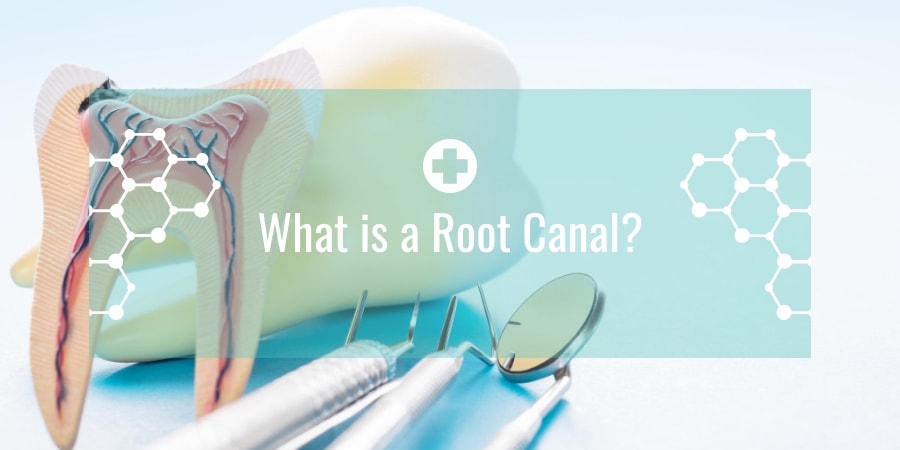When you are told you need a root canal, it is generally because the nerve in your tooth has been damaged and is starting to die, or in some cases has slowly gone bad over time. This can happen due to decay in the tooth that has reached the nerve, or trauma from a blow to the tooth or in an accident where the tooth has been hit. Also sometimes a tooth can develop a crack that can reach the nerve and allow bacteria from your mouth to enter through the crack into the nerve and cause it to go bad. Many times there is pain, or sensitivity to hot or cold things during this degenerative process, but not always.
When you have a root canal done, we are actually removing that diseased and degenerating nerve tissue from the middle of the tooth. If not removed it can cause an infection to develop that we call an abscess. This can be very painful and cause swelling that must first be treated with antibiotics before the root canal can be done. A key factor in having this be a comfortable and uneventful procedure is to have the tooth relatively calm and comfortable before you begin.
The nerve tissue enters the tooth through a small opening at the tip of the root. It extends up the root of the tooth through one or more small canals and ends in the crown of the tooth in an enlarged area we call the pulp chamber.
To remove the nerve we make a small opening through the biting surface or back of the tooth that extends into the pulp chamber. We then use a series of files that extend down each canal to the small opening where it enters the root. Sometimes these files are manipulated by hand and sometimes we use a drill to advance the files through the canal until we reach the end. In this way, we clean out the nerve tissue and shape each canal so it is shaped like a small funnel or cone. We use different chemicals and medications in the tooth as we are using these files to help us clean out all the nerve tissue and to sterilize the canal space.
After these cleaning and shaping steps are done, we use small sterile rolled up pieces of paper that we call paper points. These are place in the canals in order to absorb and dry any moisture in the canals for the cleaning steps.. After drying, the canals now need to be filled and sealed. To do this, we use a small rubber-like material called gutta percha in a tapering shape that corresponds to the size of the files we used to clean each canal. These gutta percha points are coated with a sealing cement and extended down each canal to the tip of the root where the nerve entered the tooth.
This procedure allows you to save your tooth. With the newer filing techniques in use today, there is much less stress placed on the tooth and that makes the procedure quicker and more comfortable for you both during and after the procedure. I have found in my practice that if we control any existing infection prior to the root canal procedure, my patients rarely complain of any significant pain either during or afterward. I don’t routinely need to prescribe any pain medicine because people don’t need it. They can usually just take over-the-counter pain relievers such as acetaminophen (Tylenol), ibuprofen (Motrin), or aspirin.
So in conclusion, if you are told you need this procedure done on a tooth, it is nothing to dread. The large majority of root canals are now accomplished quickly with little or no discomfort.
